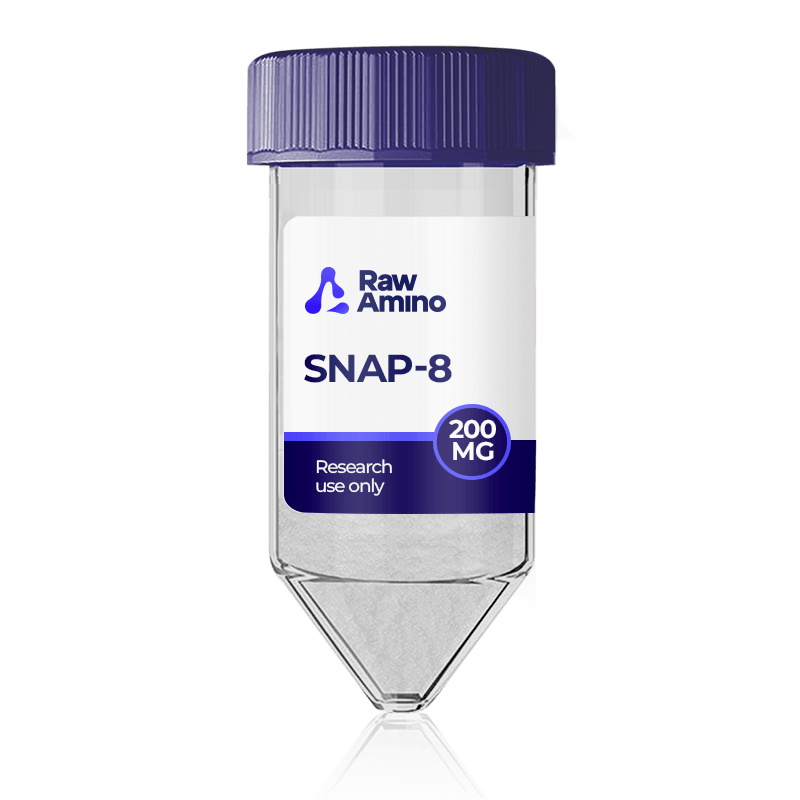
SNAP-8 – 200MG
$166.00
Discount per Quantity
| Quantity | Discount | Price |
|---|---|---|
| 5 - 8 | 5% | $157.70 |
| 9 + | 10% | $149.40 |
Scientific Overview of SNAP-8
SNAP-8, also known as Acetyl Glutamyl Heptapeptide-3, is a laboratory-engineered peptide developed as a smaller analogue of the protein SNAP-25, which is linked to neurotransmitter release and muscular signaling. Researchers have explored SNAP-8 for its potential to mimic certain interactions observed in SNAP-25, particularly in contexts involving cellular communication and membrane fusion. Interest in this compound has been driven by the suggestion that extending the chain length beyond earlier studied hexapeptides may allow for additional avenues of investigation in cellular and biochemical research.
Alternative Names: Acetyl Glutamyl Heptapeptide-3
SNAP-8 Studies and Research Data
SNAP-8 Explorations of Neurochemical Interaction
Investigations suggest that SNAP-8 may interact with vesicle-associated proteins such as Synaptotagmin 1, a protein considered central in calcium-mediated signaling at the synapse. By influencing regions of Synaptotagmin 1 that are associated with calcium binding, SNAP-8 has been proposed to interfere with the assembly or stability of the SNARE complex, a system important for neurotransmitter release. Some theoretical models indicate that this may alter acetylcholine release, with downstream implications for muscular signaling pathways.
Observations on Surface Characteristics
Research has described the potential for SNAP-8 to influence visible features of the skin surface. In controlled experimental models, the peptide was noted to be associated with reductions in contractile responses, which may have contributed to changes in surface smoothness. One line of inquiry reported apparent variations in wrinkle depth, suggesting a possible modulation of muscular contractions through competitive interactions with SNAP-25. Further exploration combining SNAP-8 with other peptides, such as Leuphasyl, indicated a synergistic dynamic, though this remains a subject of preliminary study.
SNAP-8 Comparative Context with Botulinum Toxin
The peptide has also been examined in relation to botulinum toxin, a compound widely recognized for disrupting SNAP-25 function. While botulinum toxin directly cleaves SNAP-25, SNAP-8 appears to emulate portions of this protein and interfere with the assembly of the SNARE complex through a different route. This distinction highlights its potential as a comparative research tool in studies focused on neurotransmitter release and muscular contraction.
Considerations of Moisture and Oxidative Balance
Some investigations suggest SNAP-8 may possess water-binding characteristics, potentially supporting extracellular matrix hydration. Alongside this, preliminary findings point toward interactions with reactive oxygen species, implying a possible role in buffering oxidative stress at the cellular level. These avenues of study align the peptide with broader research into peptides that may contribute to maintaining structural integrity under experimental conditions.
Conclusion
SNAP-8 has been investigated primarily as a synthetic fragment related to SNAP-25, with research highlighting its potential to influence neurotransmitter release, muscular signaling, and extracellular balance. Various studies have proposed roles in altering contractile activity, modifying surface topography, and engaging in comparative analysis with other bioactive compounds. Findings remain exploratory, emphasizing SNAP-8 as a research tool within biochemical and cellular contexts.
References
- Ji, Moongi, et al. “Method development for acetyl octapeptide-3 analysis by liquid chromatography-tandem mass spectrometry.” Journal of Analytical Science and Technology 11 (2020): 1-7.
- Gutierrez, Luis M., et al. “A peptide that mimics the C-terminal sequence of SNAP-25 inhibits secretory vesicle docking in chromaffin cells.” Journal of Biological Chemistry 272.5 (1997): 2634-2639.
- Avcil, Muhammet, et al. “Efficacy of bioactive peptides loaded on hyaluronic acid microneedle patches: A monocentric clinical study.” Journal of Cosmetic Dermatology 19.2 (2020): 328-337.
- Errante F, Ledwoń P, Latajka R, Rovero P, Papini AM. “Cosmeceutical Peptides in the Framework of Sustainable Wellness Economy.” Front Chem. 2020;8:572923.
- Backardzhiev, Ilko, and Dona Filcheva. “Peptides in dermatocosmetics.” Journal of Varna Medical College 4.1 (2022): 45-49.
Disclaimer:
The products mentioned are intended solely for laboratory research and in-vitro experimentation. They are not approved for human or animal use of any kind. All details provided are for educational purposes only. By purchasing from this site, you agree to comply with our Terms and Conditions.
11 reviews for SNAP-8 – 200MG
Only logged in customers may leave a review.
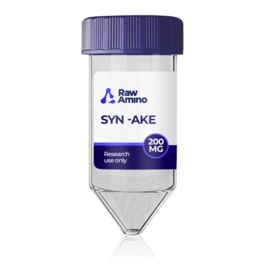
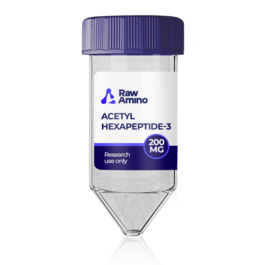
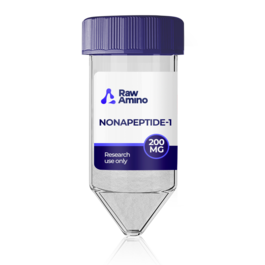
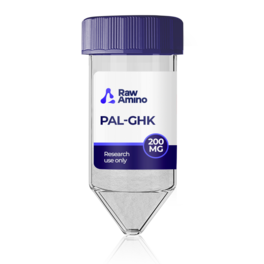
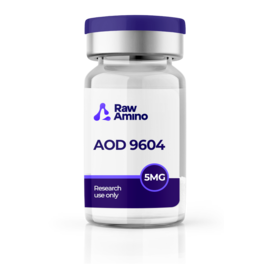
ion496x1 –
DylanU12 –
holmesjacqueline –
Neo811 –
christopher60 –
abigailrussell –
cynthia_allen –
earl_holland –
glen43 –
foleyjonathan –
Melanie236 –
All around solid company, was skeptical at first since they’re so new (less than a year in the game) but they hold their own.